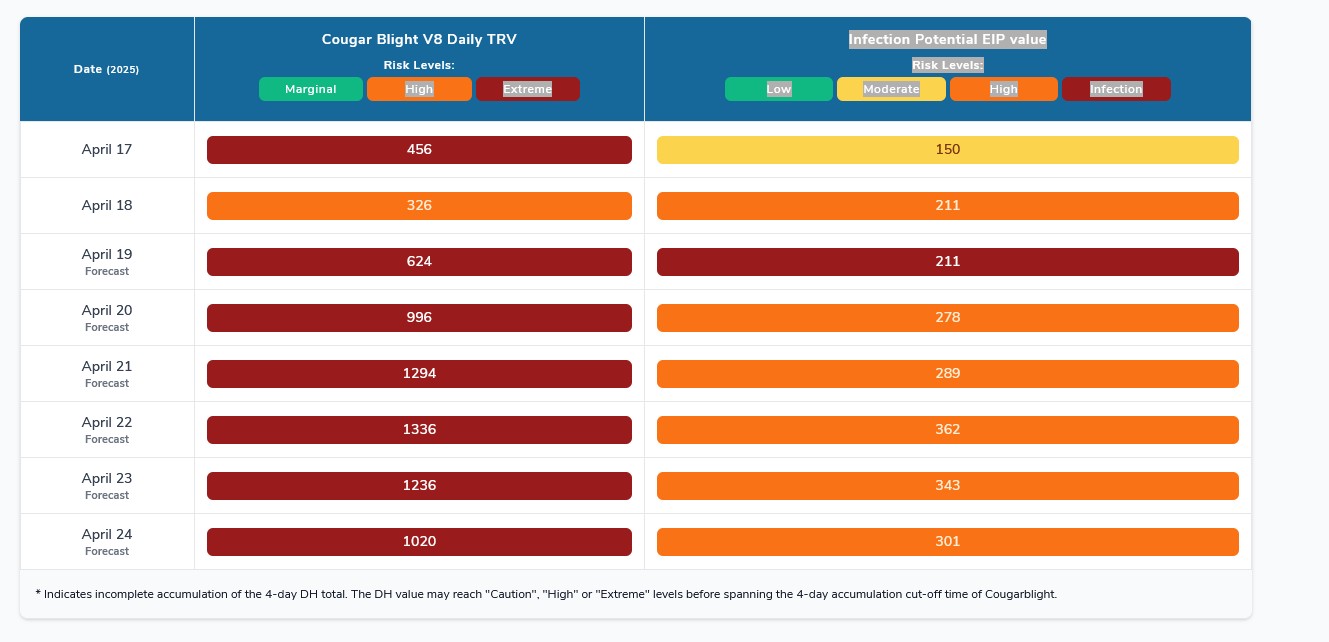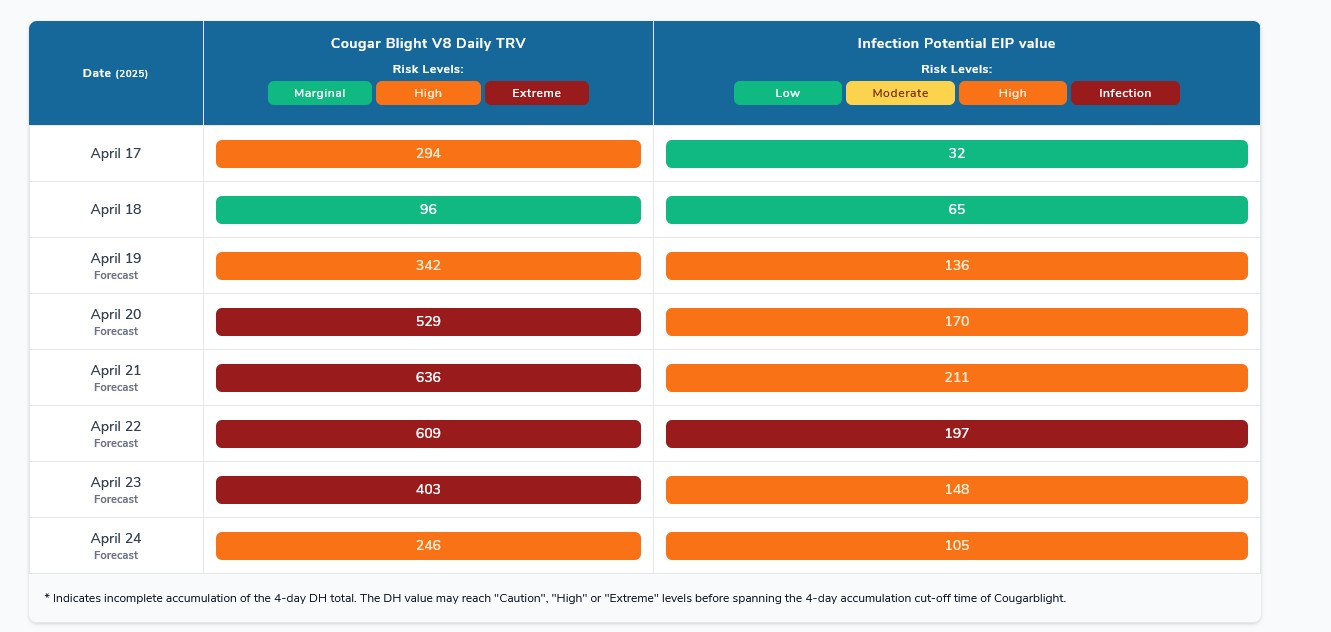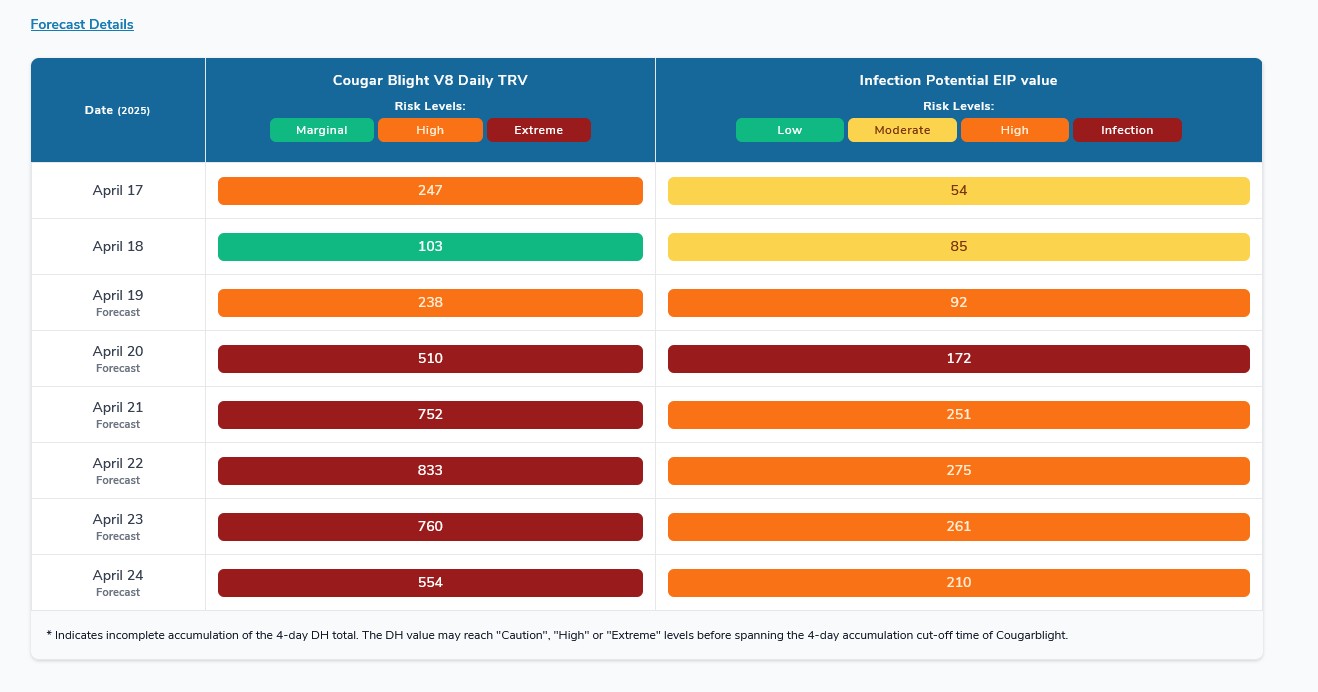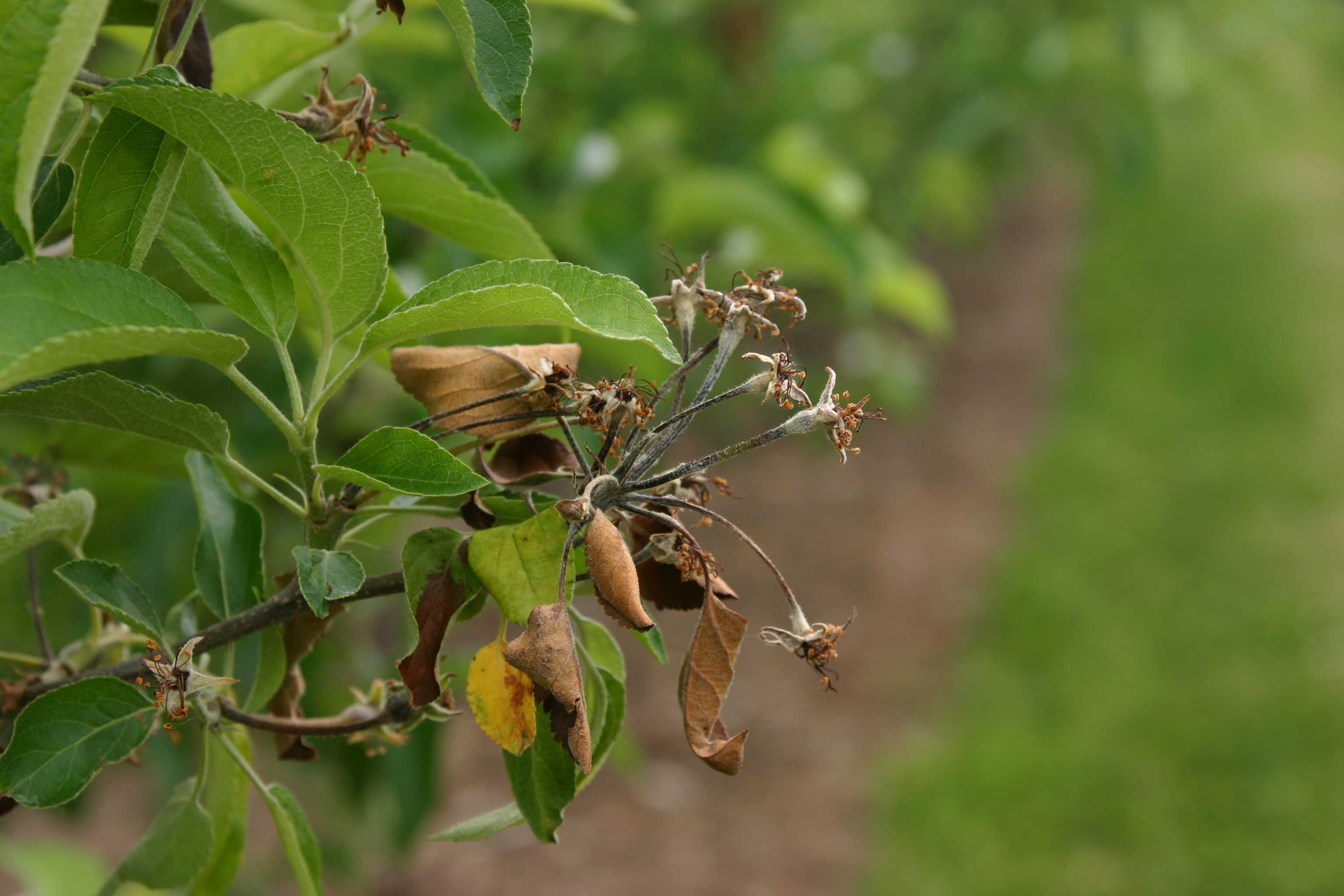April 19-22: Blossom Blight Infection Alert!
go.ncsu.edu/readext?1068609
en Español / em Português
El inglés es el idioma de control de esta página. En la medida en que haya algún conflicto entre la traducción al inglés y la traducción, el inglés prevalece.
Al hacer clic en el enlace de traducción se activa un servicio de traducción gratuito para convertir la página al español. Al igual que con cualquier traducción por Internet, la conversión no es sensible al contexto y puede que no traduzca el texto en su significado original. NC State Extension no garantiza la exactitud del texto traducido. Por favor, tenga en cuenta que algunas aplicaciones y/o servicios pueden no funcionar como se espera cuando se traducen.
Português
Inglês é o idioma de controle desta página. Na medida que haja algum conflito entre o texto original em Inglês e a tradução, o Inglês prevalece.
Ao clicar no link de tradução, um serviço gratuito de tradução será ativado para converter a página para o Português. Como em qualquer tradução pela internet, a conversão não é sensivel ao contexto e pode não ocorrer a tradução para o significado orginal. O serviço de Extensão da Carolina do Norte (NC State Extension) não garante a exatidão do texto traduzido. Por favor, observe que algumas funções ou serviços podem não funcionar como esperado após a tradução.
English
English is the controlling language of this page. To the extent there is any conflict between the English text and the translation, English controls.
Clicking on the translation link activates a free translation service to convert the page to Spanish. As with any Internet translation, the conversion is not context-sensitive and may not translate the text to its original meaning. NC State Extension does not guarantee the accuracy of the translated text. Please note that some applications and/or services may not function as expected when translated.
Collapse ▲Unfortunately despite this being a holiday weekend for some, the fire blight bacterium doesn’t seem to care. Sorry for the late notice everyone and thanks to my colleague, Tom Kon, for alerting me to yet another blossom blight infection risk! There are some cultivars like Honeycrisp, Rome Beauty, and Crimson Crisp that still are not at petal fall. Also, some cultivars have a few blossoms still opening here and there throughout the region. If you still have open flowers please continue to read. If not-congratulations and ignore this!
Polk County, NC
 As of the evening of April 19, 2025, according to the EIP model, a blossom blight infection event was predicted for April 19, 2025 (Saturday). While there was no rain, dew was recorded on the 19th, leading to the bacteria, Erwinia amylovora, that were reproducing on the flower stigmas to be washed into the nectarthodes. There is also a high risk for blossom blight infection through April 24th. As long as there are flowers on trees that are open, a rain event, heavy dew, or even a pesticide spray could be enough to wash the bacteria into the flowers and cause infection. If you spray strep on Sunday April 20th, apply the 200 ppm rate (48 oz/A or 16 oz/100 gal of Harbour). This should provide some kickback activity to cover today’s (Apr 19th) infection event, and should get you through Tuesday or Wednesday without too much concern (unless more flowers continue to open). If flowers continue to open and either rain comes into the forecast or you make another pesticide application later in the week, you may need to add strep again. If you didn’t have a heavy dew on Saturday, continue to monitor the forecast you and you may want to consider adding strep to the tank (100 ppm) when you make a pesticide application this coming week (if there are flowers still open).
As of the evening of April 19, 2025, according to the EIP model, a blossom blight infection event was predicted for April 19, 2025 (Saturday). While there was no rain, dew was recorded on the 19th, leading to the bacteria, Erwinia amylovora, that were reproducing on the flower stigmas to be washed into the nectarthodes. There is also a high risk for blossom blight infection through April 24th. As long as there are flowers on trees that are open, a rain event, heavy dew, or even a pesticide spray could be enough to wash the bacteria into the flowers and cause infection. If you spray strep on Sunday April 20th, apply the 200 ppm rate (48 oz/A or 16 oz/100 gal of Harbour). This should provide some kickback activity to cover today’s (Apr 19th) infection event, and should get you through Tuesday or Wednesday without too much concern (unless more flowers continue to open). If flowers continue to open and either rain comes into the forecast or you make another pesticide application later in the week, you may need to add strep again. If you didn’t have a heavy dew on Saturday, continue to monitor the forecast you and you may want to consider adding strep to the tank (100 ppm) when you make a pesticide application this coming week (if there are flowers still open).
Henderson County, NC
 As of the evening of April 19, 2025, an blossom blight infection event is predicted on April 22, according to the EIP model. There is a high risk of infection on April 19-21, and 23-24. Given the rain predictions for the 23rd and 24th, these dates may likely change to “infection” on the EIP model as the week presses on. Also keep in mind that EIP levels are well above the 100 value threshold and temperatures continue to be high this week meaning that a heavy dew, rain, or pesticide application could likely cause an infection if open flowers are not protected. Certainly, you know your orchards best and if there’s significant wetting on your blossoms overnight, despite what the weather station is recording. As long as you had/have no wetting events on April 19th or 20th, I would highly encourage putting an application of streptomycin (8 oz/100 gal 24 oz/A of Harbour) out on Monday prior to the rain on Monday night/Tuesday. Strep should only need to be applied to blocks with open blossoms. If you spray strep on Monday, as of now this should cover you through April 24th.
As of the evening of April 19, 2025, an blossom blight infection event is predicted on April 22, according to the EIP model. There is a high risk of infection on April 19-21, and 23-24. Given the rain predictions for the 23rd and 24th, these dates may likely change to “infection” on the EIP model as the week presses on. Also keep in mind that EIP levels are well above the 100 value threshold and temperatures continue to be high this week meaning that a heavy dew, rain, or pesticide application could likely cause an infection if open flowers are not protected. Certainly, you know your orchards best and if there’s significant wetting on your blossoms overnight, despite what the weather station is recording. As long as you had/have no wetting events on April 19th or 20th, I would highly encourage putting an application of streptomycin (8 oz/100 gal 24 oz/A of Harbour) out on Monday prior to the rain on Monday night/Tuesday. Strep should only need to be applied to blocks with open blossoms. If you spray strep on Monday, as of now this should cover you through April 24th.
Wilkes County, NC
 As of the evening of April 19, 2025, an blossom blight infection event is predicted on April 20th, according to the EIP model. There is a high risk of infection on April 19, and 21-24. Given the rain predictions for April 22-24, these dates may likely change to “infection” on the EIP model as the week presses on. Also keep in mind that EIP levels are well above the 100 value threshold and temperatures continue to be high this week meaning that a heavy dew, rain, or pesticide application could likely cause an infection if open flowers are not protected. Certainly, you know your orchards best and if there’s significant wetting on your blossoms overnight, despite what the weather station is recording. 0.01 inches of rain is predicted on April 20th, which is why an infection event is predicted. I wouldn’t be too concerned with hopping on the tractor on Sunday, but it would be wise to apply streptomycin to any blocks with open blossoms on Monday April 21st. If there is a wetting event on Sunday, I’d go with the high rate of strep (16 oz/100 gal; 48 oz/A Harbour) on Monday to cover any infection that may have occurred on Sunday. If you apply strep on Monday, the blossom blight infection risk will remain moderate through April 23rd. Keep watching the radar though as the risk of rain hovers around 50% for most of the week.
As of the evening of April 19, 2025, an blossom blight infection event is predicted on April 20th, according to the EIP model. There is a high risk of infection on April 19, and 21-24. Given the rain predictions for April 22-24, these dates may likely change to “infection” on the EIP model as the week presses on. Also keep in mind that EIP levels are well above the 100 value threshold and temperatures continue to be high this week meaning that a heavy dew, rain, or pesticide application could likely cause an infection if open flowers are not protected. Certainly, you know your orchards best and if there’s significant wetting on your blossoms overnight, despite what the weather station is recording. 0.01 inches of rain is predicted on April 20th, which is why an infection event is predicted. I wouldn’t be too concerned with hopping on the tractor on Sunday, but it would be wise to apply streptomycin to any blocks with open blossoms on Monday April 21st. If there is a wetting event on Sunday, I’d go with the high rate of strep (16 oz/100 gal; 48 oz/A Harbour) on Monday to cover any infection that may have occurred on Sunday. If you apply strep on Monday, the blossom blight infection risk will remain moderate through April 23rd. Keep watching the radar though as the risk of rain hovers around 50% for most of the week.



